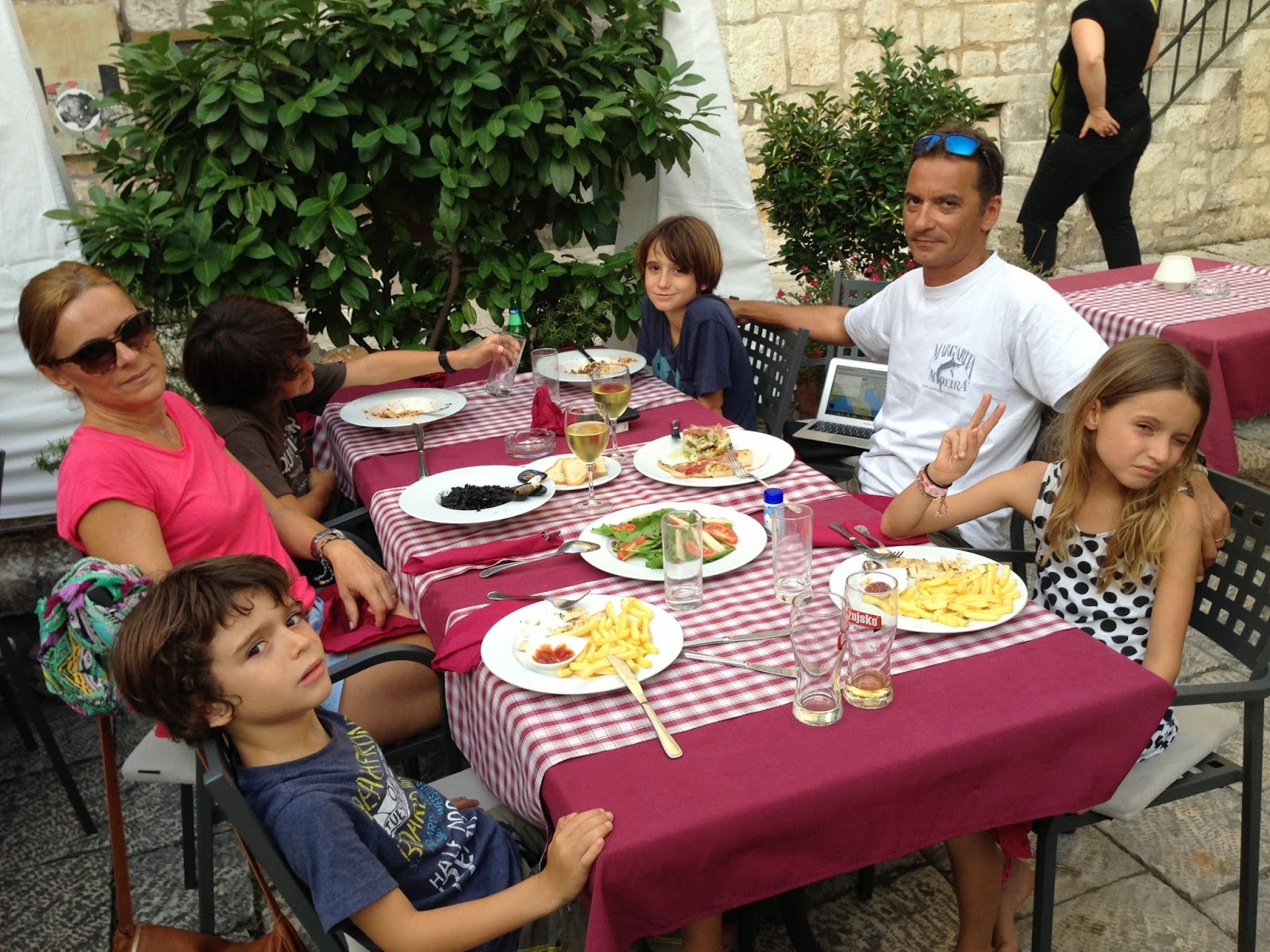 |
| Split is the second-largest city of Croatia and the largest city of the region of Dalmatia. It lies on the eastern shore of the Adriatic Sea, centred on the Roman Palace of the Emperor Diocletian. Spread over a central peninsula and its surroundings, Split's greater area includes the neighboring seaside towns as well. An intraregional transport hub and popular tourist destination, the city is a link to numerous Adriatic islands and the Apennine peninsula. |
 |
| Trogir is a historic town and harbour on the Adriatic coast in Split-Dalmatia County, Croatia, with a population of 10,818 (2011)and a total municipality population of 13,260 (2011). The historic city
of Trogir is situated on a small island between the Croatian mainland
and the island of Čiovo.[2] It lies 27 kilometres (17 miles) west of the city of Split. Since 1997, the historic centre of Trogir has been included in the UNESCO list of World Heritage Sites. |
 |
| Thank Ivo for all the hospitality....we will be back. |
 |
| Ferry to hvar. |
 |
| Hvar’s location at the center of the Adriatic sailing routes has long made this island an important base for commanding trade up and down the Adriatic, across to Italy and throughout the wider Mediterranean. It has been inhabited since pre-historic times, originally by a Neolithic people whose distinctive pottery gave rise to the term Hvar culture, and later by the Illyrians. The ancient Greeks founded the colony of Pharos in 384 BC on the site of today’s Stari Grad, making it one of the oldest towns in Europe. They were also responsible for setting out the agricultural field divisions of the Stari Grad Plain, now a UNESCO World Heritage Site. In medieval times, Hvar (city) rose to importance within the Venetian Empire as a major naval base. Prosperity brought culture and the arts, with one of the first public theatres in Europe, nobles’ palaces and many fine communal buildings. |

























Belas cores e cenários. Bjns
ReplyDeleteWonderful imoression of your tour...tnx. Xx
ReplyDelete